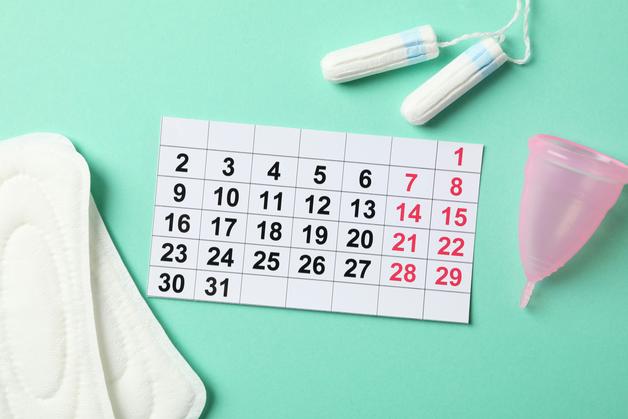Anticipating the beginning of labor can feel a bit like standing on a trembling threshold—questions bounce around with no clear answers, the mind ticking with hope, anxiety, and curiosity all at once. Is that twinge a practice run or the opening act to meeting your baby soon? Should you race to maternity or take another calming breath and wait? For many parents, the drive to identify contractions correctly weaves through these daily wonders and worries. Understanding what the uterus is up to, distinguishing between harmless Braxton Hicks and true labor signals, becomes a bridge to feeling more in control. What should you watch for? How do you know when it’s time to act—or to wait? Science, practical guidance, and compassionate support combine here, so you can identify contractions clearly and respond with newfound confidence. Let’s untangle the differences, clarify the signs, and offer reassurance in moments of anticipation.
The science of contractions: what exactly is happening in your body?
What does it mean when your belly firms up, tightens, and perhaps tugs a little across your lower back? Medically, contractions are rhythmic pulses of the uterus—a muscle so powerful, it can guide new life into the world. Picture waves: the uterus contracts, the abdomen hardens, and then everything relaxes. Inside, a symphony of hormones—oxytocin, prostaglandins, even estrogen—fine-tune this orchestra, making sure each wave comes at just the right time. Sometimes, these tightenings are mere practice, like the body’s own dress rehearsal. Other times, they signal the onset of labor, the real beginning.
Everyone’s experience is unique—a dull ache, sudden pressure, perhaps a squeezing spasmodic pain. Yet, all these sensations stem from the same underlying process: uterine muscle fibers tightening and relaxing. Recognizing when to identify contractions that truly matter is a skill every parent can cultivate. Is the sensation brief and irregular—or persistent and growing, laced with rising discomfort? That’s the question knitting together confidence and preparation.
The two faces of contractions: decoding Braxton Hicks and true labor
Braxton Hicks contractions: understanding “practice” tightenings
Imagine a training montage—no finish line in sight, just steady preparation. That’s the nature of Braxton Hicks, often nicknamed “pre-labor contractions” or “false labor.” Typically, these emerge well before your due date. The belly may harden, there’s a tug-of-war under the skin, but generally, the pain is minimal or absent. More an odd sensation than an emergency.
Key facts about Braxton Hicks:
- Irregular, unpredictable, and often infrequent—no timers needed, they arrive and leave without ceremony
- Mild, more annoying than painful; rarely do they steal your breath away
- With hydration and a simple change of posture, these waves almost always ebb away
- Sometimes, triggers include physical activity, mild dehydration, or even intimacy
Curious if your discomfort will pass? Try sipping water, reclining on your side, or soaking in a lukewarm bath (as long as your amniotic membranes are intact). Most often, these simple steps will hush these contractions. Nevertheless, if worry grows, a quick call to a provider can offer peace of mind. After all, one person’s “false alarm” is still an important chance to check in.
True labor contractions: when every signal matters
Now imagine a different rhythm—intense, surging waves that don’t abate with water, posture, or gentle reassurance. This is the domain of active labor contractions—regular, persistent, unmistakably escalating. The pressure starts in your lower back, wraps around to the front, radiates, and grows. Here’s how you identify contractions that demand attention:
- Grow in strength and frequency: The gaps between them shrink, the intensity rises, and each contraction lingers longer than before—sometimes lasting up to 90 seconds
- Movement offers no relief: No matter how you position yourself, these contractions persist
- Cervical change is underway: Here’s where things get medical—these contractions cause your cervix to dilate and thin out, preparing for birth
- Side signals may include: passage of the mucus plug (“bloody show”), rupture of the amniotic sac (watery fluid leak), or pronounced pelvic heaviness
Are these signals ambiguous? Often, yes—especially the first time. If you’re wondering how to identify contractions that cross into labor territory, ask: do they get closer together? Does each wave feel stronger, more persistent? Does rest make no difference at all? If the answer is yes, your labor journey may be underway.
Identifying labor: the practical checklist every parent needs
Classic signs: charting the differences at a glance
Feeling overwhelmed? Here’s a structured table to help you identify contractions quickly and accurately:
| Feature | True Labor Contractions | Braxton Hicks Contractions |
|———————-|———————————-|———————————–|
| Rhythm | Regular, patterned, escalating | Irregular, sporadic |
| Strength | Grows with time | Mild, static |
| Duration | Lengthens over minutes | Short bursts |
| Location | Lower back, belly, sometimes thighs | Front of belly only |
| Responds to rest | Not relieved | Often disappears |
| Cervical effect | Causes dilation/effacement | No impact on cervix |
| Related symptoms | Water breaking, bloody show, downward pressure | None |
Home strategies: tracking what matters
Worried about missing the “real” moment? Start observing and timing contractions: use a stopwatch, an app, or old-fashioned paper and pen.
- Frequency: How often do contractions start, measured from the beginning of one to the next?
- Duration: How long does each wave last—thirty seconds or stretching close to ninety?
- Intensity: Try to rate how manageable each one feels: mild (easy to talk through), moderate (harder to focus elsewhere), or strong (speaking becomes difficult).
A common rule doctors like to share? The “5-1-1 rule”: contractions every five minutes, lasting at least one minute each, continuing for one hour. If you reach this pattern, it’s time for a conversation with your care team.
Immediate red flags to watch
Sometimes, speed is as important as precision. Identify contractions that arrive before 37 weeks and occur every 10 minutes or less, are painful, or are joined by fluid loss or bleeding—don’t wait. Once full term, persistent contractions every five minutes demand action, as do heavy bleeding, decreased movements, or feeling generally unwell.
Pain, pressure, and confusion: teasing apart common sensations
Contractions, baby movements, or simple aches?
It’s late at night. Your belly tightens. Is it a contraction—or your baby stretching out? Identify contractions by checking for uniform hardening across the whole belly, often tied to a predictable pain wave. Baby kicks or rolls deform the belly but never cause the entire uterus to become rigid and cyclically painful.
What if your muscles ache from standing or poor posture? That discomfort generally sits in one spot and disappears with a quick stretch or massage. Contractions, instead, repeat in waves—growing, fading, returning again. A dense, patterned rhythm hints that it’s time to identify contractions and perhaps prepare to meet your little one.
Early warning: spotting signs that need fast assessment
Much as excitement grows with the approach of labor, early or unusual symptoms should never be dismissed. Preterm contractions—regular, painful tightenings before 37 weeks—especially with loss of amniotic fluid, unusual discharge, or reduced fetal movement—demand immediate medical review. When doubts arise, err on the side of caution and reach out. Preterm birth care always starts with prompt action.
Labor markers beyond contractions: what parents should watch
Rupture of membranes: what if the water breaks?
A sudden gush or prolonged leak of pale-clear fluid—does your amniotic sac no longer hold? Take note of color and quantity. If the liquid is greenish or brown, contact your provider at once (that color might mean meconium). Even if contractions haven’t started, confirm the situation with your care team.
The mucus plug and a “bloody show”
Have you noticed a viscous, sometimes blood-tinged discharge, gelatinous and unfamiliar? This often signals cervical change, a sure sign that labor may be close—but it’s not always immediate. Paired with regular contractions, however, it means it’s time to prepare for the next step.
Heaviness, downward pressure, or the baby “dropping”
As labor approaches, many report a perceptible shift—the baby moves downward, amplifying pelvic pressure, causing backache or cramps. Such sensations, especially if novel or pronounced, should join your identify contractions checklist as you interpret your body’s readiness.
Finding comfort and relief: what you can do at home
Simple comfort strategies
Physical reassurance can lighten the wait or ease discomfort. Try lying on your side, finding a position that supports your bump, letting a warm bath (if membranes are intact) soothe tense muscles, or practicing mindfulness, prenatal yoga, or deep breathing. Pregnancy-safe gentle activity, like slow walks or rhythmic swaying, can sometimes help. Hydration is no trivial matter—dehydration can make practice contractions worse.
Medical options: when nature needs a nudge
Occasionally, midwives may suggest an antispasmodic for persistent, non-labor tightenings—always with supervision. True labor brings medical options, from tailored pain management to regional anesthesia such as an epidural. Discuss these with your team, weigh your preferences, and keep the dialogue open.
Checklists and preparation
Ready your hospital bag, record contraction details (start time, length, and pain level), and review transportation plans. Small acts of preparation foster agency and peace in unpredictable moments.
Professional assessment at the hospital: what to expect
Once you arrive at the hospital, a midwife or obstetrician will measure contractions externally (using a tocodynamometer) and check your baby’s heart rate and your own health markers. Cervical exams assess progress (dilation, thinning), while ultrasound might clarify baby’s position, amniotic fluid, or placental health. In rare cases, an intrauterine pressure catheter gives a precise reading of contraction force. Every step focuses on safety and reassurance.
The role of your care team: reassurance, information, and partnership
Support from professionals—your midwife, doctor, or obstetrician—offers a foundation of expertise and empathy. Birth plans, preferences, and personalized advice form a shared partnership. Communication is the thread connecting you to prompt answers and comfort—timely action if signals change, evidence-based advice in ambiguous moments.
Key Takeaways
- Learning to identify contractions that herald active labor brings reassurance and helps avoid premature hospital visits.
- Braxton Hicks contractions are part of the body’s natural rehearsal—mild, irregular, and often quieted with rest or hydration.
- True labor contractions are regular, intensifying waves that resist relief from movement or rest; these changes point to the first stages of birth.
- Water breaking, loss of the mucus plug, persistent back or pelvic pain, and decreased baby movement—all are signs that need immediate attention.
- Precision in tracking timing, duration, and intensity helps you identify contractions confidently and take appropriate next steps.
- Never hesitate to connect with your medical team for doubts, unusual symptoms, or when threshold signs emerge.
- Numerous resources and supportive professionals exist to guide and comfort you. For more tailored advice and health questionnaires for children, consider downloading the Heloa app—trusted, free, and personalized for families.
Clarity, preparation, and trusted information turn the mystery of identifying contractions into a skill—and offer a source of strength as your parenting story begins.
Questions Parents Ask
Can contractions be felt in different ways from one pregnancy to another?
Absolutely. Each journey toward meeting your baby is unique, and contractions may feel different depending on several factors, such as the baby’s position, your level of activity, or even the way your body responds to pregnancy hormones. Some parents describe a dull ache, others sense tightening across the whole belly, and some notice pain radiating into their lower back or thighs. If you’re unsure about what you feel, remember that everyone’s experience is valid—feel free to reach out to your care provider for reassurance.
Is it possible not to notice the first contractions?
Yes, that’s possible—and it’s more common than you might think. Sometimes, especially for those expecting their first child, early contractions can be so mild or irregular that they blend into the background or feel like subtle discomfort. Many parents only realize labor has started when contractions grow more rhythmic or intense. Rassurez-vous, noticing every single early sign isn’t always necessary. Paying attention to how your body changes and staying in touch with your care team are already helpful steps.
Can stress or emotions influence the perception of contractions?
It’s natural for emotions to play a role in how you experience contractions. Excitement, anxiety, or even fatigue can sometimes make sensations feel stronger, more uncomfortable, or confusing. Taking moments to relax, breathe deeply, or seek support from a loved one can help you interpret what your body is telling you with more calm. And remember: you’re not alone; many parents share these mixed feelings and find comfort through support and preparation.










